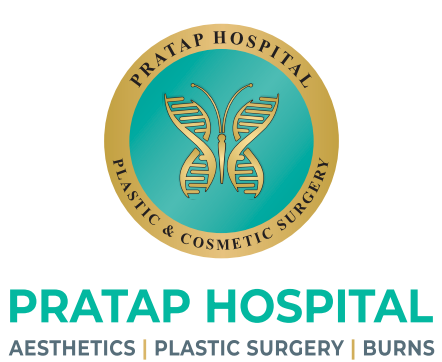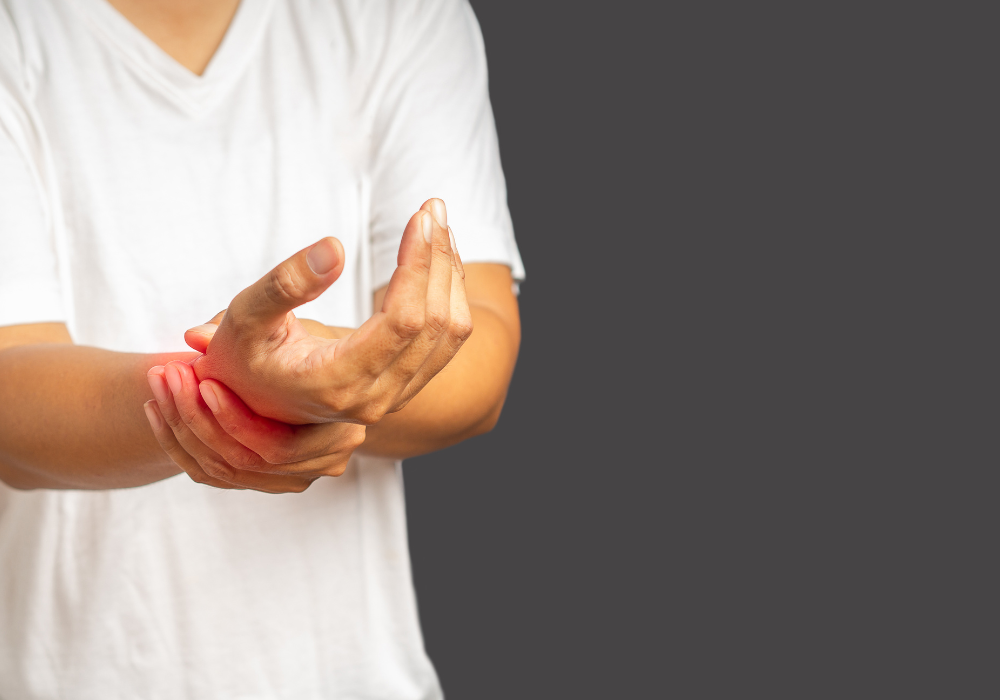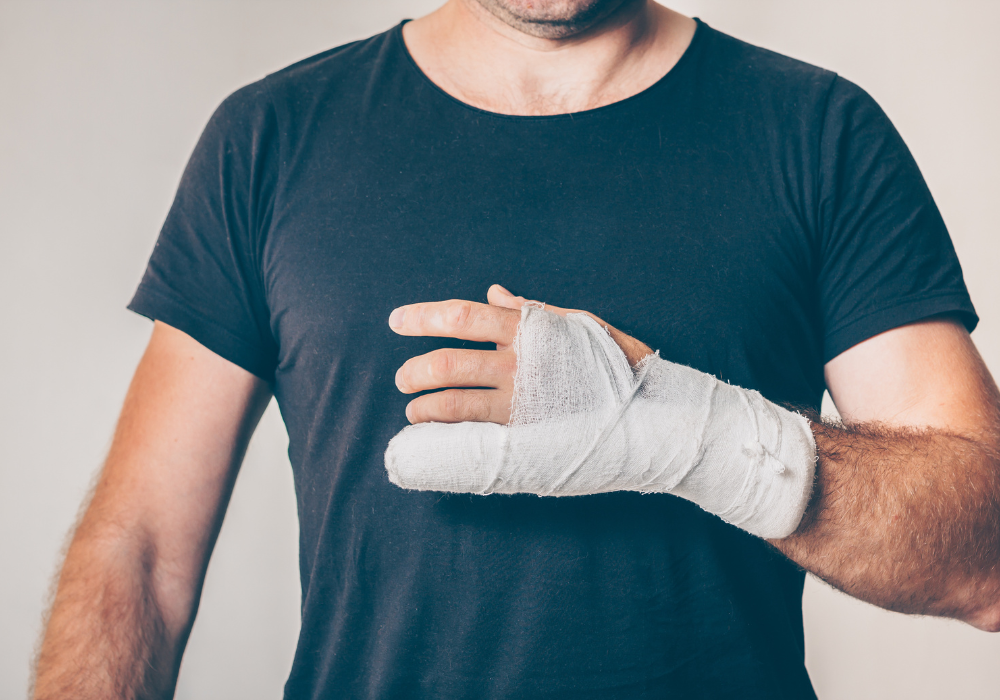
- Home
- About Us
- Surgical
- Non Surgical
- Burns
- Maxillofacial
- Gallery
- Testimonials
- Contact Us
Acute Hand Fracture & Trauma — Rapid, Precise & Function-Focused Care
Advanced Hand Trauma Management at Pratap Hospital, led by Dr. Pratap Duggirala (M.S., M.Ch) provides specialized evaluation, emergency care, and expert reconstruction for all types of acute hand fractures and traumatic injuries.
As a center recognized for hand trauma and microsurgical reconstruction in Vijayawada, Pratap Hospital focuses on restoring bone alignment, tendon integrity, joint stability, circulation, and long-term hand function.
With extensive expertise in fracture fixation, tendon repair, nerve repair, soft-tissue reconstruction, and microvascular surgery, Dr. Pratap ensures patients receive timely, accurate, and highly skilled treatment.
Whether the injury is a simple fracture, a crushed finger, dislocation, open fracture with bone exposure, or complex trauma involving multiple tissues, every treatment plan is tailored for fast recovery, functional restoration, and long-term hand health

- Overview
- Why People Choose Pratap Hospital for Acute Hand Trauma Care
- Pre-Surgical Evaluation
- Surgical Techniques Used
- The Surgical Process
- Frequently Asked Queries
The hand contains 27 bones, multiple joints, tendons, nerves, and vessels, making it highly vulnerable to injury. Acute hand trauma can result from:
Road traffic accidents
Workplace/machine injuries
Sports trauma
Falls
Domestic accidents
Heavy object impact
Common types of acute hand injuries include:
Phalanx fractures
Metacarpal fractures
Fracture-dislocations
Tendon ruptures
Neurovascular injuries
Open fractures with soft-tissue loss
Immediate and specialized care is essential to prevent stiffness, deformity, nerve damage, and long-term disability.
✓ Expert in Hand Trauma & Microvascular Reconstruction
Dr. Pratap has 15+ years of experience managing complex hand injuries, including fractures, tendon injuries, nerve repairs, and vascular trauma.
✓ Precision-Driven Bone & Soft Tissue Reconstruction
The goal is to restore:
Bone alignment
Joint mobility
Tendon function
Nerve sensation
Circulation
✓ Advanced Operation Theatre Setup for Emergencies
Equipped for:
Fracture fixation
Microsurgical vessel repair
Tendon reconstruction
Flap coverage for exposed structures
✓ Faster Recovery & Functional Outcomes
Early physiotherapy and guided rehabilitation ensure optimal results.
✓ Personalized, Occupation-Specific Care
Treatment plans consider patient needs, job demands, and lifestyle for returning to daily activities quickly.
Early assessment ensures accurate diagnosis and timely treatment.
✔ Clinical Examination
Deformity evaluation
Swelling and tenderness
Tendon movement testing
Sensory and vascular assessment
✔ Imaging
X-rays for bone alignment
CT for complex comminuted fractures
Ultrasound/Doppler for vessel injuries
✔ Open Wound Assessment
For contamination, soft-tissue loss, and risk of infection.
✔ Surgical Planning
Choosing the best method for fracture fixation and soft-tissue reconstruction.
.
Closed Reduction & Splinting
For simple, non-displaced fractures.
• Open Reduction & Internal Fixation (ORIF)
Using:
Plates
Screws
K-wires
To restore perfect alignment and stability.
• External Fixators
For unstable fractures, severe soft-tissue injury, or crushed hands.
• Tendon Repair
Reconstruction of flexor or extensor tendons for functional movement.
• Nerve Repair / Nerve Grafting
To restore sensation and fine motor control.
• Vascular Repair / Revascularization
Microsurgical restoration of blood flow when arteries or veins are injured.
• Flap Coverage & Skin Grafting
For open fractures with exposed bone or tendons
Step 1: Emergency Stabilization
Pain management
Control of bleeding
Temporary splinting
Wound cleaning and dressing
Step 2: Definitive Fracture Fixation
Depending on the injury:
Closed reduction
ORIF
External fixation
Combined tendon/nerve repair
Step 3: Soft-Tissue Reconstruction
Flaps or grafts for coverage
Microsurgical vessel repair if needed
Step 4: Post-Operative Care & Rehabilitation
Early physiotherapy to prevent stiffness
Splinting protocols
Scar care
Regular follow-ups for bone healing
1. Can a hand fracture heal without surgery?
Yes, if the fracture is stable and aligned. However, displaced or rotational fractures usually require surgical correction.
2. How soon should I seek treatment after a hand injury?
Immediate evaluation is critical — delayed treatment can lead to poor alignment, stiffness, and deformity.
3. Will I regain full hand movement?
With proper fixation, soft-tissue repair, and physiotherapy, most patients regain excellent function.
4. How long does recovery take?
Typically 4–8 weeks for bone healing; full functional recovery may take a few months depending on tendon or nerve involvement.
5. What if my injury involves exposed bone or tissue?
Advanced flap and microsurgical techniques are used to provide soft-tissue coverage and preserve hand function.
6. Is physiotherapy required?
Absolutely. Early hand therapy prevents stiffness and ensures the best long-term results.
Book a Consultation
If you’re considering rhinoplasty for aesthetic enhancement or breathing improvement, schedule a consultation at Pratap Hospital today.
Our team will guide you through every step — from evaluation and planning to surgery and recovery — ensuring safe, effective, and natural results.
📍 Pratap Hospital — Reconstructive, Aesthetic & Microsurgery Centre
📞 Call / WhatsApp: +91 94929 69899
📧 Email: drpratapshospital@gmail.com

Before And After Results















